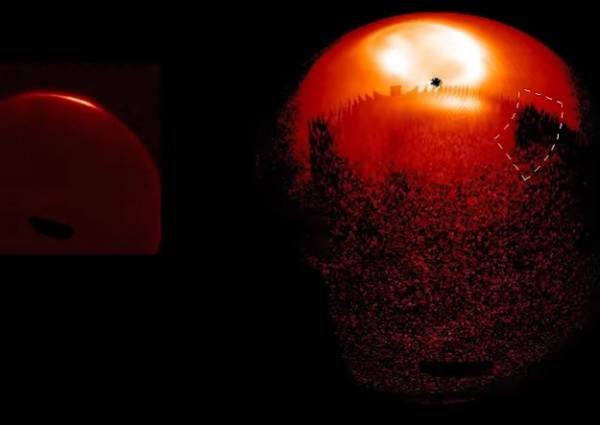By Ana Verayo, | April 11, 2017

Unlike Jupiter's Great Red Spot, the newly discovered weather system is constantly changing in shape and size.
Jupiter's famous Great Red Spot is not alone. A new discovery by astronomers reveal that there is another, second "great spot" on Jupiter that is now called the Great Cold Spot.
A team of scientists from the University of Leicester has identified this new, great spot within Jupiter's thermosphere. This is also a thin, tenuous region in the gas giant's upper atmosphere that possesses freezing temperatures and highly active layers as opposed to the lower atmosphere.
Like Us on Facebook
According to Tom Stallard who is an Associate Professor in Planetary Astronomy at the University of Leicester, this Great Cold Spot is very volatile that is now directly and slowly transforming the Great Red Spot. The Great Red Spot is now changing in shape in size in a very short span of a few days and weeks despite re-appearing over the past 15 years.
This also suggests that since this is now continuously reforming itself, this means that this can be as old as auroras on Jupiter, around thousands of years old. Scientists suggest that this local vortex is driven by auroras located in Jupiter's polar regions. This in turn, generates thermal energy to sustain the magnetic field of the planet, as it also creates a cold layer in the thermosphere.
This ultimately produced a dark and cold massive cyclone system. The team detected this Great Cold Spot by using the infrared instrument of the Very Large Telescope in Chile's European Southern Observatory. The VLT was able to map out this cold storm and measure the atmosphere's temperatures and density. Apparently, this cooling cyclone system is also surrounded by scorching heat.
Despite being more volatile than the Great Red Spot, the Great Cold Spot is also stable. On Earth, auroras occur sporadically due to the sun's solar flares and solar activity that strike our planet randomly. On the other hand, auroras on Jupiter receive a steady stream of gasses from volcanic activity ejected by one of its moons.
Stallard adds, the Great Cold Spot on Jupiter was truly a surprising discovery, which also indicates that there might be similar features that can exist in Jupiter's upper atmosphere. This new study is published in the journal Geophysical Research Letters.
-
Use of Coronavirus Pandemic Drones Raises Privacy Concerns: Drones Spread Fear, Local Officials Say

-
Coronavirus Hampers The Delivery Of Lockheed Martin F-35 Stealth Fighters For 2020

-
Instagram Speeds Up Plans to Add Account Memorialization Feature Due to COVID-19 Deaths

-
NASA: Perseverance Plans to Bring 'Mars Rock' to Earth in 2031

-
600 Dead And 3,000 In The Hospital as Iranians Believed Drinking High-Concentrations of Alcohol Can Cure The Coronavirus

-
600 Dead And 3,000 In The Hospital as Iranians Believed Drinking High-Concentrations of Alcohol Can Cure The Coronavirus

-
COVID-19: Doctors, Nurses Use Virtual Reality to Learn New Skills in Treating Coronavirus Patients







